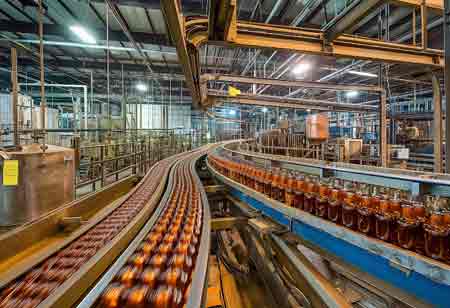THANK YOU FOR SUBSCRIBING
Be first to read the latest tech news, Industry Leader's Insights, and CIO interviews of medium and large enterprises exclusively from Food and Beverage Tech Review
Navigating the Shift: Key Automation Trends in Food and Beverage Production
The food and beverage manufacturing industry, which used to be the laggard of new technology, is experiencing a significant change in automation, with rapid growth and rising demand for increased shelf availability.

By
Food and Beverages Tech Review | Monday, April 14, 2025
Stay ahead of the industry with exclusive feature stories on the top companies, expert insights and the latest news delivered straight to your inbox. Subscribe today.
The food and beverages industry had its development pace slow for a while. Later, the industry showed swift development and embraced the adoption of automation. This article delves into the trends and drivers in the food and beverage sector.
Fremont, CA: The food and beverage manufacturing industry, which used to be the laggard of new technology, is experiencing a significant change in automation, with rapid growth and rising demand for increased shelf availability.
The most significant automation trends observed among food and beverage manufacturers include:
Digital Transformation:
Upper management should strategically design this transformation to ensure all components are considered. The transformation process and the operational team tasked with the ongoing monitoring and analysis of data necessary for optimizing the facility must be considered.
Robotics:
A robotic system can function independently as a standalone automation unit; however, its potential is realized when incorporated into your comprehensive efficiency framework. The design of the robotic cell, the development of end-of-arm tooling, the selection of the appropriate robot, and the seamless integration of this design into your overall production or packaging line are essential for harnessing the full capabilities of robotics.
Artificial Intelligence:
This technology is particularly effective when utilized in applications requiring a precise product volume to fill a container. Artificial intelligence can assist in guaranteeing that the correct and exact volume is dispensed consistently into each pint. Furthermore, it offers essential insights to identify inefficiencies in machinery that could affect production, enabling plant managers to take proactive measures regarding scheduled downtime, routine maintenance, or upgrades, thereby ensuring optimal performance and profitability.
What are the Trend Drivers?
The technological trends in the industry are influenced by a confluence of various factors, which include:
Safety:
The food and beverage industries are governed by various safety regulations that manufacturers must comply with. The necessity for tracking production processes and precisely documenting food safety metrics for quality assurance departments is continually advancing, driven by the emergence of various digital solutions that prioritize both product integrity and employee safety. Enhancements in ergonomics, reducing repetitive tasks, and managing weight limitations are all critical elements that improve worker safety.
Early Adopter Lessons:
The food and beverage sector stands to gain from a trickle-down effect derived from technological insights gained in other industries that have successfully implemented comparable technologies. For example, a digital reporting mandate established in the life sciences sector may also prove advantageous for the food and beverage industry in addressing its regulatory compliance challenges.
Energy Costs:
Increasing energy and utility expenses necessitate the adoption of technologies that enable manufacturers to modify and optimize their utility usage, ensuring that they consume only the essential amount of energy required.
I agree We use cookies on this website to enhance your user experience. By clicking any link on this page you are giving your consent for us to set cookies. More info







